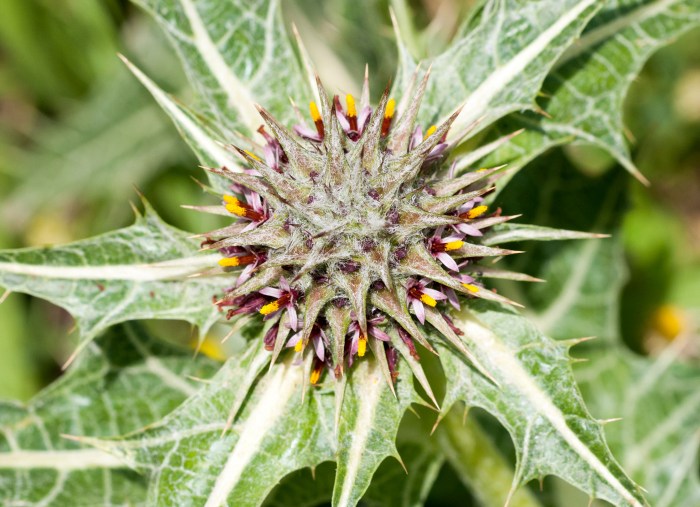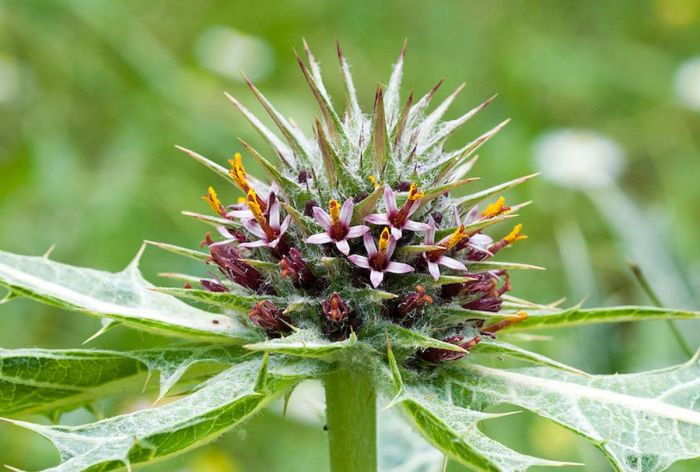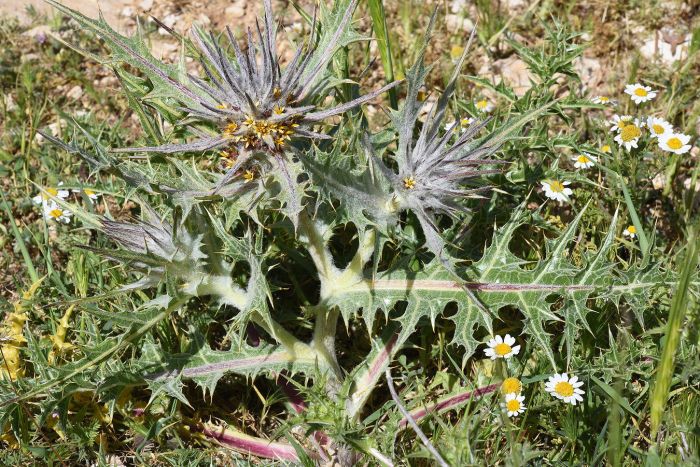Gundelia tournefortii crown of thorns – Gundelia tournefortii, commonly known as the crown of thorns, is a captivating plant that has captivated humans for centuries with its striking appearance, purported medicinal properties, and rich cultural significance. This article delves into the botanical, medicinal, culinary, cultural, and conservation aspects of this enigmatic plant, offering a comprehensive exploration of its unique characteristics and the role it has played throughout history.
Gundelia tournefortii is a member of the Asteraceae family and is native to the Mediterranean region. Its distinctive physical features include its large, spiny leaves, which resemble a crown of thorns, and its bright yellow flower heads. The plant prefers dry, rocky habitats and is commonly found in mountainous areas.
Gundelia tournefortii: Crown of Thorns

Gundelia tournefortii, commonly known as Crown of Thorns, is a distinctive and enigmatic plant species that has captured the attention of botanists, historians, and traditional healers for centuries. Its unique physical characteristics, medicinal properties, and cultural significance make it a subject of ongoing research and fascination.
Botanical Description
Gundelia tournefortii is a large, herbaceous plant belonging to the Asteraceae family. It is characterized by its massive, circular leaves that form a rosette, resembling a crown or a thorny halo. The leaves are typically 30-100 cm in diameter, with deep incisions and sharp spines along the edges.
The plant produces tall, stout stems that can reach up to 1 meter in height, bearing large, yellow flower heads.
Gundelia tournefortii prefers well-drained, sandy or gravelly soils and is often found in arid and semi-arid regions. It is native to the eastern Mediterranean, including Turkey, Iran, and Iraq, and has also been introduced to other parts of the world.
Medicinal Properties, Gundelia tournefortii crown of thorns
Traditional medicine has long recognized the medicinal properties of Gundelia tournefortii. The plant has been used for centuries to treat various ailments, including digestive disorders, wounds, and skin infections. Modern research has identified several active compounds in the plant, including flavonoids, alkaloids, and terpenes, which are believed to be responsible for its therapeutic effects.
Studies have shown that Gundelia tournefortii extracts possess antibacterial, antifungal, and anti-inflammatory properties. It has been shown to inhibit the growth of common pathogens such as Staphylococcus aureus and Escherichia coli. Additionally, the plant has antioxidant and analgesic effects, making it a potential candidate for pain relief and inflammation management.
Culinary Applications
In some cultures, Gundelia tournefortii is used as a food source and flavoring agent. The young leaves are edible and can be consumed raw or cooked. They have a slightly bitter taste and are often used in salads, soups, and stews.
The seeds are also edible and can be roasted or ground into a powder for use as a condiment.
Gundelia tournefortii is a good source of fiber, vitamin C, and potassium. However, it is important to note that the plant contains certain compounds that can be toxic if consumed in large quantities. Therefore, it is recommended to consume the plant in moderation and seek guidance from a qualified herbalist or healthcare professional.
Question & Answer Hub: Gundelia Tournefortii Crown Of Thorns
What are the medicinal properties of Gundelia tournefortii?
Gundelia tournefortii has been traditionally used to treat various ailments, including digestive disorders, respiratory problems, and skin conditions. Scientific studies have identified active compounds in the plant that support its purported medicinal properties.
Is Gundelia tournefortii edible?
Yes, the young leaves and shoots of Gundelia tournefortii are edible and can be consumed raw or cooked. However, it is important to note that the plant’s spines can be irritating to the skin, so caution should be exercised when handling it.
What is the cultural significance of Gundelia tournefortii?
Gundelia tournefortii has been associated with religious ceremonies, traditional medicine, and folklore in various cultures throughout history. In some cultures, it is believed to possess protective powers and is used in rituals to ward off evil spirits.

